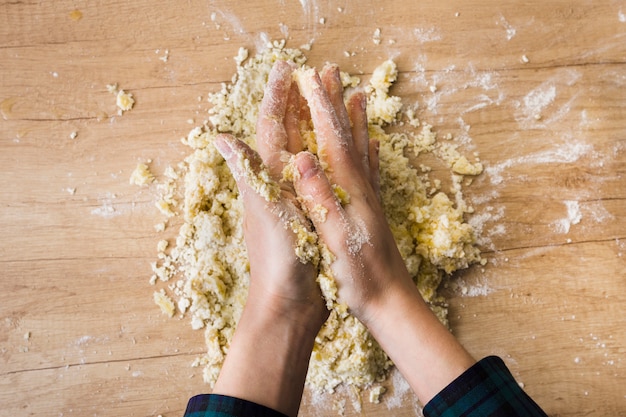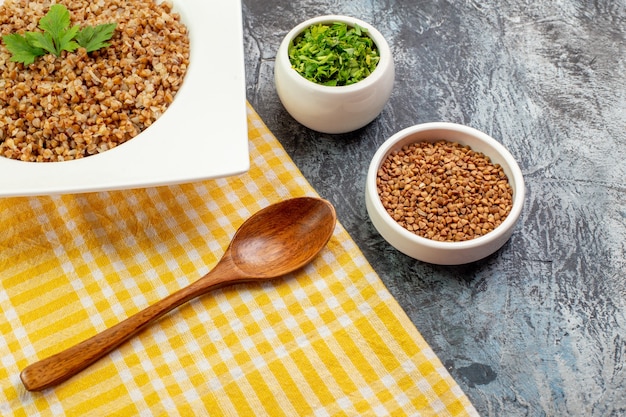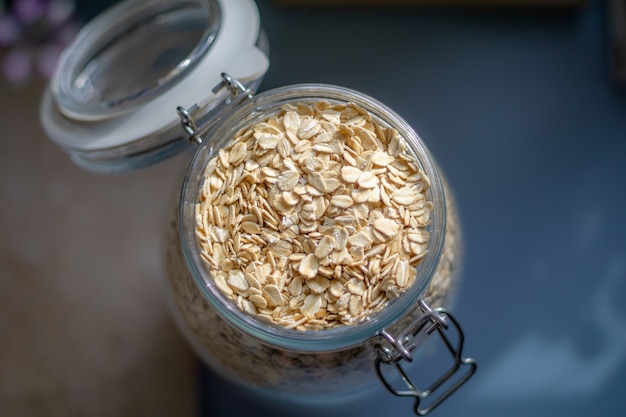Barley, that humble grain, has seen a resurgence in popularity, and for good reason! It’s a versatile pantry staple, packed with good-for-you nutrients like fiber and protein. And let’s not forget that delightful chewy texture that keeps you coming back for more.
My own barley journey started back in university days. Determined to eat healthy on a tight budget, I threw some barley into a pot of water, boiled it, and… well, let’s just say it wasn’t exactly the culinary triumph I’d envisioned. Mushy, bland, and frankly, a bit of a let-down. But that experience, as disappointing as it was, actually sparked my fascination with this grain. Over the years, I've experimented with various cooking methods, discovered some truly delicious recipes, and learned a thing or two about how to make this humble grain shine.
So, grab your apron, dear reader, because I'm about to share all my barley wisdom, from choosing the right type to mastering different cooking techniques and whipping up some mouthwatering recipes. Let's get cooking!
(Part 1) Choosing the Right Barley: A Grain for Every Purpose

The first step in any barley adventure is selecting the right type. There are several varieties, each with its unique characteristics and ideal uses.
pearl barley: The Quick and Easy Option
This is the most common barley you’ll find in supermarkets, and it’s the quickest to cook. It’s been polished and hulled, which gives it a smoother texture and faster cooking time. If you're looking for a simple and quick grain side dish, pearl barley is a great choice. However, keep in mind that it’s less nutritious than other types due to the processing.
hulled barley: A Chewy, Nutty Delight
Also known as "scotch barley" or "pot barley," hulled barley boasts a delightful chewy texture and a slightly nutty flavour. It takes a bit longer to cook than pearl barley, but it’s well worth the extra time. You'll usually find hulled barley in bulk food stores or online.
Whole Barley: The Most Nutrient-Rich Choice
This is the least processed barley and therefore the most nutrient-packed. It has a hearty, nutty flavour and a chewy texture, but it takes the longest to cook. Whole barley is ideal for hearty stews, soups, and dishes that benefit from its distinct flavour and texture.
(Part 2) Mastering the Basics of Barley Cooking: A Simple Guide

Now that you’ve chosen your barley, let’s dive into the fundamentals of cooking it. Don’t worry, it’s not rocket science! Just a few key points to keep in mind:
The Barley-to-Water Ratio: A Crucial Balance
The ratio of barley to water is essential for achieving perfectly cooked barley. Generally, you want to use about 2 cups of water for every 1 cup of barley. This will ensure your barley cooks evenly without becoming mushy.
The Power of a Gentle Simmer: Patience is Key
Once your barley and water are simmering, patience is your best friend. Barley takes time to cook thoroughly. Don’t rush the process! Simmer gently for about 30-45 minutes, or until tender, and the liquid has been absorbed.
The Taste Test: A Crucial Step
Always taste your barley as it cooks. If it’s a bit firm, add a little more water and continue simmering. You can also adjust the seasonings as needed.
(Part 3) Cooking Techniques: Unlocking the Potential of Barley

There are several ways to cook barley, each with its own advantages. Let’s explore three popular methods:
The Stovetop Method: The Classic Approach
This is the simplest and most straightforward way to cook barley, making it a great starting point for beginners.
1. Combine your barley and water in a saucepan.
2. Bring the mixture to a boil over high heat.
3. Reduce heat to low, cover the saucepan, and simmer gently for 30-45 minutes, or until the barley is tender.
4. Season with salt and pepper to taste.
The pressure cooker Method: For Busy Cooks
If you’re looking for a faster way to cook barley, a pressure cooker is your best friend.
1. Combine your barley and water in your pressure cooker.
2. Cook on high pressure for 10-12 minutes, or until the barley is tender.
3. Release the pressure naturally for 10 minutes.
The slow cooker method: Hands-Off Cooking at its Best
The slow cooker is perfect for those who prefer a hands-off approach.
1. Combine your barley, water, and any additional ingredients you wish to add in your slow cooker.
2. Cook on low for 6-8 hours, or on high for 3-4 hours, or until the barley is tender.
(Part 4) Adding Flavor and Creativity: Taking Barley Beyond the Basics
Barley is a blank canvas, waiting for your culinary creativity to transform it into something truly special.
Flavor Boosters: Herbs, Spices, and More
1. Herbs and Spices: A pinch of this, a dash of that, and suddenly your barley is singing a new song!
- For a Mediterranean vibe, add oregano, thyme, and a sprinkle of red pepper flakes.
- For an Asian-inspired twist, try ginger, garlic, and soy sauce.
- For a comforting autumnal flavour, add rosemary, sage, and nutmeg.
2. Vegetables: Adding chopped vegetables like carrots, celery, onions, or mushrooms while cooking not only adds flavor but also boosts the nutritional value of your dish.
3. Citrus: A squeeze of lemon or lime juice brings a bright, refreshing touch to barley.
Savory barley recipes: A World of Flavor
1. barley risotto: This creamy, comforting dish is a delicious alternative to traditional risotto. Combine barley with broth, parmesan cheese, and your favourite vegetables.
2. barley soup: A hearty and healthy soup perfect for a cold day. Combine barley with broth, vegetables, and herbs for a soul-warming meal.
3. barley salad: This light and refreshing salad is perfect for a summer lunch. Combine cooked barley with chopped vegetables, herbs, and a vinaigrette dressing.
(Part 5) Sweet Barley Treats: Unexpected Delights
Barley isn’t just for savoury dishes! It can also create some surprisingly delicious sweet treats.
1. Barley Porridge: Start your day with a creamy bowl of barley porridge. Simply cook barley with milk and add your favourite toppings, such as fruit, nuts, or honey.
2. Barley Bread: This hearty bread is full of flavour. Add barley to your favourite bread recipe for a unique twist.
3. Barley Pudding: A comforting dessert perfect for a cold evening. Cook barley with milk, sugar, and spices like cinnamon and nutmeg.
(Part 6) Storage Tips: Keeping Your Barley Fresh and Ready
Once you've cooked your barley, it's important to store it properly to keep it fresh and ready for future use.
1. Refrigerator Storage: Store cooked barley in an airtight container in the refrigerator for up to 3-4 days.
2. Freezing Barley: You can freeze cooked barley for up to 3 months. Let it cool completely, then place it in freezer-safe bags or containers.
3. Reheating Barley: To reheat frozen barley, thaw it overnight in the refrigerator or reheat it in the microwave or on the stovetop.
(Part 7) The Barley and Health Connection: A Nutritious Choice
Beyond its versatility, barley offers a host of health benefits. Here’s a quick look at its nutritional power:
High in Fiber: Fueling Digestive Health
Barley is an excellent source of dietary fiber, which aids digestion and promotes a healthy gut.
Good Source of Protein: Building and Repairing Tissues
Barley is also a good source of protein, essential for building and repairing tissues throughout the body.
Rich in Vitamins and Minerals: Essential Nutrients
Barley is packed with essential vitamins and minerals, including iron, magnesium, and B vitamins, which play crucial roles in maintaining overall health.
May Help Manage Blood Sugar: Supporting Healthy Blood Sugar Levels
Studies suggest that barley can help regulate blood sugar levels, which is particularly important for managing diabetes.
(Part 8) Barley in Different Cultures: A Global Staple
Barley has a long and fascinating history, and it’s a staple food in many cultures around the world.
Middle Eastern Cuisine: A Versatile Ingredient
Barley is a popular ingredient in Middle Eastern cuisine, where it’s used in soups, stews, and salads. Try "Freekeh," a type of roasted green barley, which adds a smoky, nutty flavour to dishes.
European Cuisine: A Culinary Classic
In Europe, barley features prominently in a variety of dishes, including barley soup, barley risotto, and barley bread.
Asian Cuisine: A Staple Grain
In Asian cuisine, barley is often used in congee, a type of rice porridge, and "Hordeum," a type of barley tea.
(Part 9) Barley Recipes to Try: From Classic to Creative
To inspire your culinary adventures, I’ve compiled some of my favourite barley recipes. Let’s get cooking!
Classic Barley Soup with Roasted Vegetables
This hearty and flavorful soup is perfect for a chilly day.
- Ingredients:
- 1 cup pearl barley
- 4 cups vegetable broth
- 1 large onion, chopped
- 2 carrots, chopped
- 2 celery stalks, chopped
- 1 sweet potato, peeled and cubed
- 1 zucchini, chopped
- 1 teaspoon dried thyme
- Salt and pepper to taste
- Instructions:
1. Preheat oven to 400°F (200°C).
2. Toss the onion, carrots, celery, sweet potato, and zucchini with olive oil, salt, and pepper.
3. Roast in the preheated oven for 20-25 minutes, or until tender.
4. While the vegetables are roasting, combine the barley and vegetable broth in a large pot.
5. Bring to a boil, then reduce heat to low and simmer for 30 minutes, or until the barley is tender.
6. Add the roasted vegetables to the pot and stir to combine.
7. Season with salt, pepper, and thyme to taste.
8. Serve warm.
Creamy Barley risotto with mushrooms and Parmesan
A delicious and satisfying take on the classic Italian dish.
- Ingredients:
- 1 cup pearl barley
- 4 cups vegetable broth
- 1 tablespoon olive oil
- 1 onion, chopped
- 2 cloves garlic, minced
- 1 pound cremini mushrooms, sliced
- 1/2 cup dry white wine
- 1/2 cup grated Parmesan cheese
- Salt and pepper to taste
- Instructions:
1. Heat olive oil in a large pot over medium heat.
2. Add the onion and garlic and cook until softened, about 5 minutes.
3. Add the mushrooms and cook until softened, about 5 minutes more.
4. Add the barley and white wine and cook for 1 minute.
5. Gradually add the hot vegetable broth, 1 cup at a time, stirring constantly until the broth is absorbed before adding more.
6. Continue cooking for about 20-25 minutes, or until the barley is tender and the risotto is creamy.
7. Stir in the Parmesan cheese and season with salt and pepper to taste.
8. Serve immediately.
Barley Salad with Lemon-Herb Dressing
A light and refreshing salad perfect for a summer lunch or dinner.
- Ingredients:
- 1 cup cooked barley
- 1 cup chopped cucumber
- 1/2 cup chopped red onion
- 1/4 cup chopped fresh parsley
- 1/4 cup chopped fresh dill
- 1/4 cup olive oil
- 2 tablespoons lemon juice
- Salt and pepper to taste
- Instructions:
1. Combine the barley, cucumber, red onion, parsley, and dill in a large bowl.
2. Whisk together the olive oil, lemon juice, salt, and pepper in a small bowl.
3. Pour the dressing over the salad and toss to combine.
4. Serve chilled.
(Part 10) FAQs: Your Barley Questions Answered
Here are some of the most common questions people have about barley:
1. What is the difference between pearl barley and hulled barley?
Pearl barley has been polished and hulled, giving it a smoother texture and faster cooking time. Hulled barley, also known as scotch barley or pot barley, retains its outer hull, resulting in a chewy texture and a slightly nutty flavour. It takes longer to cook because it's less processed.
2. How long does it take to cook barley?
The cooking time for barley depends on the type and cooking method. Pearl barley typically takes 30-45 minutes on the stovetop, while hulled barley takes 45-60 minutes. A pressure cooker can significantly reduce cooking time.
3. Can I substitute barley for rice in recipes?
Yes, you can substitute barley for rice in many recipes. Keep in mind that barley has a chewier texture than rice, so you may need to adjust cooking times and liquid amounts.
4. Is barley gluten-free?
No, barley is not gluten-free. It contains gluten, a protein that can cause problems for people with celiac disease or gluten sensitivity.
5. What are some good toppings for barley?
The possibilities are endless, but here are a few suggestions:
- Vegetables: Chopped onions, carrots, celery, mushrooms, spinach, broccoli, etc.
- Herbs: Fresh or dried herbs like parsley, cilantro, dill, oregano, thyme, rosemary, etc.
- Nuts and seeds: Sunflower seeds, pumpkin seeds, walnuts, almonds, etc.
- Cheese: Parmesan, cheddar, feta, goat cheese, etc.
- Fruit: Berries, grapes, apples, pears, etc.
- Protein: Chicken, fish, tofu, etc.
I hope this guide has inspired you to embrace the culinary possibilities of barley. From simple side dishes to hearty soups and delicious desserts, this versatile grain has a place in every kitchen. Happy cooking!
Everyone is watching

Corn on the Cob: The Ultimate Guide to Perfectly Cooked Ears
Healthy MealsAh, corn on the cob. Just the name evokes images of sunny days, barbecues, and that sweet, juicy flavour that ...

Perfect Pork Roast Oven Cooking Time: A Guide to Delicious Results
Healthy MealsThere's something truly satisfying about a perfectly roasted pork. The aroma alone is enough to make your mout...

Ham Cooking Time: How Long to Bake, Smoke, or Boil a Delicious Ham
Healthy MealsAh, ham. It's a classic, isn't it? A real crowd-pleaser, especially around holidays. And when done right, it'...

Scallops: The Ultimate Guide to Perfect Cooking
Healthy MealsAh, scallops. Those delicate, sweet, and utterly delicious morsels of the sea. They hold a special place in my...

Spaghetti Squash: The Ultimate Guide to Cooking and Serving
Healthy MealsRemember that time you saw spaghetti squash at the supermarket, looking all bumpy and strange, and thought, "W...
